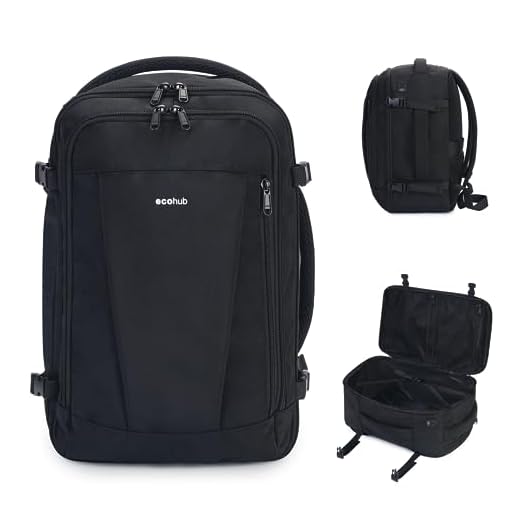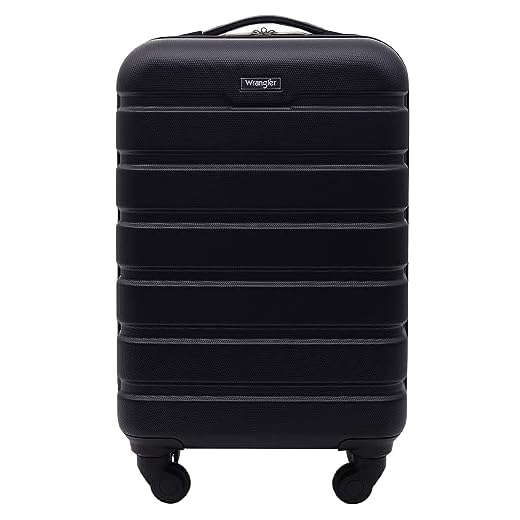





Equipaje de mano refers to the personal items you can take aboard an aircraft without additional fees. Typically, it includes a small suitcase, backpack, or handbag, designed to fit in overhead compartments or under the seat in front of you. Adhering to airline size and weight restrictions helps ensure a hassle-free boarding experience.
Each airline has specific policies regarding these travel essentials. Generally, dimensions should not exceed 55x40x20 cm, with a weight limit of 7-10 kg. It’s advisable to check your airline’s guidelines prior to travel to avoid unnecessary complications at the airport.
In addition to your primary piece, some carriers allow a personal item such as a laptop bag or purse. Items like jackets, books, and duty-free purchases typically qualify as exceptions and can accompany you on board. However, ensure all transported items comply with the regulations regarding liquids and prohibited materials.
Understanding Carry-On Baggage in Spanish
The term for carry-on baggage in español is equipaje de mano. This phrase is commonly used in airports and travel documentation, making it essential for travelers who need to refer to their personal items that fit in the cabin of an aircraft.
In addition to equipaje de mano, other expressions related to this topic can enhance communication. For instance, maleta de cabina also refers to a cabin suitcase and is often seen in travel guides. Being familiar with both terms will help in understanding airline policies regarding size and weight limits.
When checking in or boarding, it’s beneficial to know that different airlines may have varying regulations concerning dimensions. Using terms like dimensiones permitidas (allowed dimensions) will come in handy when confirming compliance with an airline’s restrictions.
While packing, remember items classified as artículos personales (personal items) may include a laptop, handbag, or other small bags that accompany your equipaje de mano. Familiarizing yourself with these terms will ensure you’re well-prepared and able to query any specific rules in Spanish.
Definition of Carry-On Bag in Spanish
In the Spanish language, the phrase for carry-on baggage is “equipaje de mano.” This term specifically denotes bags that passengers are allowed to bring into the aircraft cabin, contrasting with checked items which are stored in the cargo hold. “Equipaje de mano” typically includes a range of items from small suitcases to backpacks, purse, and laptops.
Airlines often have specific size and weight restrictions for these bags, which vary by carrier. For instance, many airlines enforce maximum dimensions of about 55 cm x 40 cm x 20 cm (22 inches x 16 inches x 8 inches). Below is a table elaborating on standard regulations:
| Airline | Max Size (cm) | Max Weight (kg) |
|---|---|---|
| Airline A | 56 x 45 x 25 | 10 |
| Airline B | 55 x 40 x 20 | 8 |
| Airline C | 54 x 38 x 21 | 7 |
| Airline D | 55 x 35 x 25 | 12 |
It is advised to check the specific carrier’s guidelines in advance, as policies may differ. Additionally, storing personal items, important documents, and fragile belongings is recommended to ensure easy access during travel.
Common Terms Used for Carry-On Bags in Spanish-speaking Countries
In various Spanish-speaking regions, several terms refer to carry-on bags. Recognizing these terms can facilitate better communication while traveling.
- Equipaje de mano – This is the most widely used term, directly translating to “hand luggage.” It is commonly accepted in airports and travel contexts.
- Maleta de cabina – Meaning “cabin suitcase,” this phrase is popular among airlines to describe airline-approved carry-ons.
- Bolso de mano – Translated as “handbag,” this term often refers to smaller personal items carried on board.
- Maleta personal – This translates to “personal suitcase,” often indicating bags that fit under the seat.
- Equipaje de cabina – Similar to equipaje de mano, it refers directly to luggage allowed in the cabin.
Familiarizing yourself with these expressions can enhance your travel experience in Spanish-speaking nations. Different airlines may have specific size and weight regulations, so verifying with the respective airline is advisable.
- Check the airline’s website for dimensions associated with equipaje de mano.
- Consider the weight limit for your maleta personal, as larger items may incur additional fees.
- Be aware that some airlines allow an extra bolso de mano alongside the main carry-on item.
Awareness of these terms and guidelines helps streamline travel preparations and navigates potential hurdles effectively.
Airline Regulations Regarding Carry-On Baggage in Spanish
Each airline establishes specific guidelines for cabin baggage that travelers must adhere to. These rules address size, weight limits, and allowed items. It is essential to check the particular policies for each carrier before traveling.
Size and Weight Restrictions
Most airlines in Spanish-speaking countries typically allow a piece of carry-on not exceeding dimensions of 55 cm x 40 cm x 20 cm. Weight limits often vary, but a common maximum is around 8 kg. Airlines may require you to place your baggage in a measuring gauge at check-in to ensure compliance.
Prohibited Items
Each airline outlines a list of prohibited items in cabin baggage. Common restrictions include liquids over 100 ml, sharp objects, and flammable materials. Keep in mind that security regulations may necessitate further checks at the airport, which can vary by country and specific airport.
Always consult your airline’s official website or contact customer service for the most current regulations to ensure a hassle-free experience before boarding.
Popular Phrases Related to Carry-On Baggage in Spanish
Ensure you are familiar with these phrases:
“Equipaje de mano” – This is the standard term for carry-on baggage in Spanish-speaking areas.
“Maleta de cabina” – Often used interchangeably with the former, it refers specifically to cabin bags.
“Dimensiones permitidas” – Refers to the allowed dimensions for cabin bags, important for complying with airline rules.
“Peso máximo” – Indicates the maximum weight limit for the carry-on items, crucial to avoid extra charges.
“Bolso personal” – A personal bag, which typically can be brought alongside the main cabin bag.
“Zona de embarque” – The boarding area, where travelers prepare to board their flight with their carry-on items.
“Control de seguridad” – Security check, a necessary procedure all passengers with cabin items must pass through.
“Documentación” – Refers to travel documents, often checked alongside carry-on items at security checkpoints.
Be mindful of these terms for seamless travel experiences in Spanish-speaking regions.
Differences Between Carry-on Bags and Checked Baggage in Spanish Context
In Spain and many Spanish-speaking countries, the distinction between carry-on bags and checked baggage is significant, particularly regarding weight limits, size, and regulations imposed by airlines. Understanding these differences can enhance travel experience.
Size and Weight Restrictions
Carry-on bags typically must adhere to specific dimensions, often around 55 x 40 x 20 cm, and a weight limit, commonly ranging from 8 to 10 kg, varying by airline. In contrast, checked items can weigh considerably more, usually up to 23 kg per piece, with some airlines allowing for heavier options at an additional cost.
Access During Flight
- Items stored in the cabin are accessible at any time, making it convenient for travelers to retrieve necessary belongings.
- Checked items are unavailable until reaching the final destination, requiring patience and planning.
Security screening differs as well. While all bags undergo checks, passengers must comply with the liquid restrictions in their carry-on bags, leading to careful packing of cosmetics and beverages.
For travelers who manage multiple properties, understanding the regulations regarding travel insurance is also beneficial. Consider consulting about the best umbrella policy to have for landlords with multiple units to protect your investments while abroad.
Additionally, for those interested in streamlining travel logistics, knowing how to efficiently pack is key. Explore how can addition properties help me add whole numbers for tips on organizing essentials for a smoother travel experience.
Tips for Traveling with Carry-On Bags in Spanish-speaking Destinations
Prioritize packing essentials such as travel documents, medications, and valuable items within easy reach. Choose a bag that meets airline size requirements to avoid issues at check-in.
Know Local Security Regulations
Each country may have specific rules regarding prohibited items. Familiarize yourself with the regulations of your destination to ensure compliance and avoid delays.
Use Packing Cubes
Packing cubes help organize your belongings efficiently, making it easier to locate items during travel. They also maximize space within the limited confines of your baggage.
Consider including a reusable water bottle that meets airline standards, which allows you to stay hydrated without risking excess fees for buying beverages at the airport.
Inform yourself about tax-free shopping options at the airport, as some products may be less expensive than in stores. Ensure products fit your carry-on capacity to avoid inconveniences.
FAQ:
What is the Spanish translation of “hand luggage”?
The term “hand luggage” in Spanish is translated as “equipaje de mano.” This phrase is commonly used in airports and travel-related contexts to refer to the bags and items that passengers are allowed to bring onto the airplane with them, without checking them into the cargo hold.
Are there any specific regulations regarding hand luggage in Spain?
Yes, in Spain, as in many other countries, there are regulations set by airlines and airport authorities regarding hand luggage. Generally, there are limits on the size and weight of hand luggage. Most airlines allow only one piece of hand luggage that typically should not exceed dimensions of around 55 cm x 40 cm x 20 cm and weight of about 8 to 10 kg. Items such as liquids must comply with security regulations, meaning they should be in containers of no more than 100 ml and all containers must fit into a single, transparent, resealable bag. It’s advisable for travelers to check the specific luggage policies of their airline before flying.
Can you provide examples of items typically allowed in hand luggage in Spain?
Certainly! In Spain, hand luggage generally allows for personal items such as a laptop, camera, books, and clothing. Liquids in small containers (up to 100 ml each) are permitted, provided they are stored in a clear bag. Additionally, personal items like snacks, medications, and travel documents are usually allowed. However, sharp objects, large electronics, and anything that could be deemed dangerous are typically restricted. It’s best to double-check the airline’s guidelines for any specific rules.






